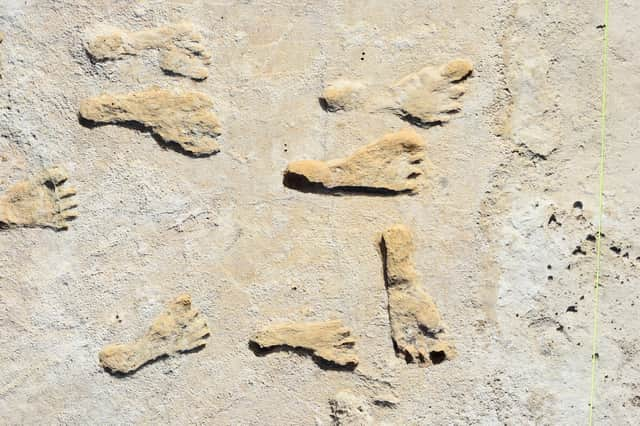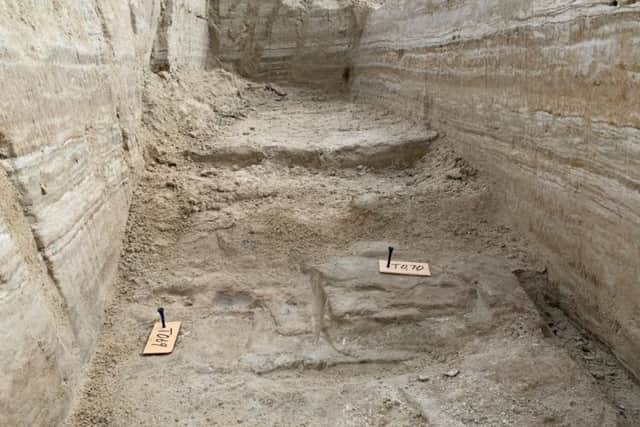Oldest North American fossilised human footprints are more than 20,000 years old, study confirms


Fossilised human footprints found in North America have been confirmed to be the oldest found on the continent and prove the presence of humans on the landmass during the last ice age. New research has turned up two new lines of evidence to support the 21,000 to 23,000-year-old estimate of the prints at White Sands National Park, New Mexico, made two years ago.
The original results back in 2021 kicked off a global conversation among the science community as to the accuracy of the ages. The research confirms humans were present in North America when the geographic extent of the ice sheet and glacier coverage on Earth's surface peaked, known as the Last Glacial Maximum - or last ice age.
Advertisement
Hide AdAdvertisement
Hide AdCo-lead author of the study - Dr Jeff Pigati - says the latest findings confirm the age of the White Sands footprints. Dr Pigati, of the US Geological Survey (USGS), said: “The immediate reaction in some circles of the archaeological community was that the accuracy of our dating was insufficient to make the extraordinary claim that humans were present in North America during the Last Glacial Maximum. But our targeted methodology in this current research really paid off.”


The controversy centred on the accuracy of the original ages, which were obtained by radiocarbon dating. The age of the White Sands footprints was initially determined by dating seeds of the common aquatic plant Ruppia cirrhosa that were found in the fossilised impressions. But aquatic plants can acquire carbon from dissolved carbon atoms in the water rather than ambient air, which can potentially cause the measured ages to be too old.
Kathleen Springer, USGS research geologist and co-lead author of the new paper, said: “Even as the original work was being published, we were forging ahead to test our results with multiple lines of evidence. We were confident in our original ages, as well as the strong geologic, hydrologic, and stratigraphic evidence, but we knew that independent chronologic control was critical.”
For the follow-up study, published in the journal Science, the research team focused on radiocarbon dating of conifer pollen, because it comes from terrestrial plants and therefore avoids potential issues that arise when dating aquatic plants such as Ruppia. The team used painstaking procedures to isolate around 75,000 pollen grains for each sample they dated.
Advertisement
Hide AdAdvertisement
Hide AdThe pollen samples were collected from the exact same layers as the original seeds, so a direct comparison could be made. In each case, the pollen age was statistically identical to the corresponding seed age.
Study co-author Dr David Wahl, a USGS research geographer, said: “Pollen samples also helped us understand the broader environmental context at the time the footprints were made. The pollen in the samples came from plants typically found in cold and wet glacial conditions, in stark contrast with pollen from the modern playa which reflects the desert vegetation found there today.”
The USGS team also used a different type of dating called optically stimulated luminescence, which dates the last time quartz grains were exposed to sunlight. Using that method, they found that quartz samples collected within the footprint-bearing layers had a minimum age of around 21,500 years, providing further support to the radiocarbon results.
Comment Guidelines
National World encourages reader discussion on our stories. User feedback, insights and back-and-forth exchanges add a rich layer of context to reporting. Please review our Community Guidelines before commenting.
